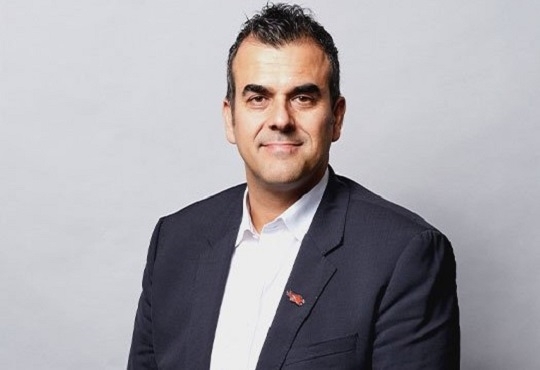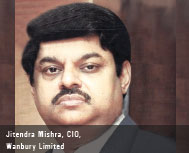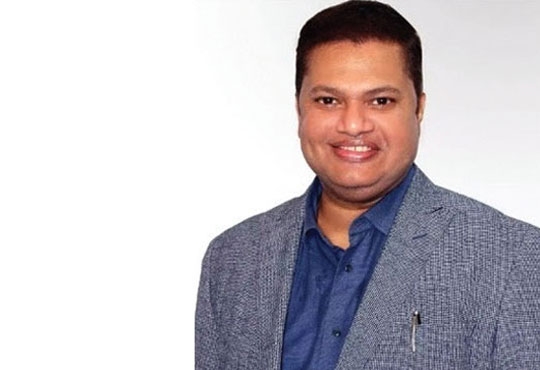
CIOTechOutlook >> Magazine >> January - 2016 issue
Internet of Things- Evolution from Exchange of Data to Excellent User Experience
By
 Wanbury limited(BSE: 524212), headquartered in Mumbai, Maharashtra, is one of India’s fastest growing pharmaceutical companies amongst the ‘Top 50 Companies’ in India (as per ORG-IM) with a market cap of 169.74 INR that provides Active Pharmaceutical Ingredients (API) and Domestic Formulations.
Wanbury limited(BSE: 524212), headquartered in Mumbai, Maharashtra, is one of India’s fastest growing pharmaceutical companies amongst the ‘Top 50 Companies’ in India (as per ORG-IM) with a market cap of 169.74 INR that provides Active Pharmaceutical Ingredients (API) and Domestic Formulations.Have you ever imagined your life so easy that you can control everything with just a tap on your device? Well, the day when this happens is not too far. With the birth of IoT, a lot of attention is paid in enhancing not only machine but also on emerging human-centric approach. It is more about creating ‘living services’ through their individual devices that people can program and connect it as per their requirements.
An analysis on user behaviour of IoT was done for various platforms and all the interactions of early adopters of IoT technology. It was found that most consumers wanted something that provided services with personal touch and adapts to various contexts as well. Human IoT in comparison with industrial IoT seems more transformative.
Most preferred IoT programs are the ones that make life unique, easier and pleasant to live. People prefer using things that let them do things in their comfort zone. The interfaces that are attention-sapping should be natural, way more natural! In short, they should operate without one typing any viable instructions on the phone or tablet, device interaction or mess up the phone settings to get the things done. Instead, these ‘living services’ should breathe on user’s anticipations and work swiftly.
Following are essential living services which identify how IoT should work and what it should mean.
1.Technology for far-reaching security
People are always looking for safety aspects in their homes. Nevertheless, there are too many solutions in this area that can relate with IoT and make lives easier. There’s an app called ‘Presence’ that creates home cameras out of old Android phones and iPhones as well. The software connects your device to functioning cameras to offer you complete view of your home. This is however very basic and SmartLabs have come up with solutions that allow complete surveillance via motion sensors using the IP.
Likewise, Apple’s HomeKit and Google’s Nest are enhancing the experiences with home security systems. So, IoT is on the pedestal to transform from home security systems to something that is as vast as fashion industry.
2.Personified apps for users
All users love to know their body mass index, level of emotional intelligence and compare it with others as well. Considering the user’s likes and dislikes, one can pick any self-measurement app and everyone would love tracking their daily numbers at home. Tracking the daily hours of sleep may be one thing. Suppose you haven’t got a chance to sleep the previous night and the sensors attached on the bed will direct to your alarm clock to set in an extra hour of sleep just to complete your daily sleeping hours. The same can be done for daily activities and all the information displayed in the dashboard will make it convenient for the user.
3.Services to make the machines efficient
The services that do not allow people to do things manually are well appreciated. The most amazing example of it would be huge umbrellas that are fitted in Mecca which opens and retracts based on the solar temperature. This idea although expensive, is smart and designed to let people be in their best comfort zone. Similar cases can be introduced in homes where lights can be switched on and off based on the temperature outside their homes. When sensors will be added in home appliances, chances are that the demand will shoot up more than supply.
4.Innovation and enhanced living
Not everyone can afford fitting sensors or make their homes custom-built on technology. Eventually, the Internet of Things technology is going to be so ubiquitous that day-to-day appliances will be available at moderate rates. IoT will be seen in every moment of our lives from every sensory environmental aspect such as sound, visuals and temperature as well. For example, if a performer likes to dance to music syncing it with light settings based on the mood, he or she will not have to manually adjust it. Various devices fitted inside the studio will activate it based on the mood of the performer.
5.Wrap up
Collection and exchange of data will be a lot easier in the future. Thinking about the things that this technology is going to unfold, it seems that we are viewing the world from a peephole. In the years to come, the clothes we wear, the appliances we use and the things we buy will all be somehow connected to each other.
CXO Insights
Five cybersecurity predictions for 2023
By Michael Sentonas, Chief Technology Officer, CrowdStrike
How Low-Code Is Transforming The Future Of Work...
By Deepak Pargaonkar, VP - Solution Engineering, Salesforce
5G Will Bring A Data Tsunami: Can Your Data...




